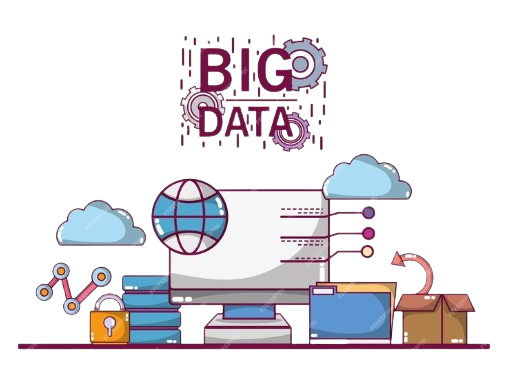In the digital age, data is a powerful asset that can drive business success. However, the true value of data can only be realized when it is effectively integrated and analyzed. Big Data Integration is the key to unlocking this potential, enabling organizations to merge diverse data sources into a unified system that delivers actionable insights.
In today’s data-driven world, organizations are inundated with vast amounts of information from a variety of sources. Whether it’s social media interactions, transactional data, IoT devices, or customer feedback, the challenge lies not in the availability of data but in the ability to seamlessly merge and analyze these diverse data sources. This is where Big Data Integration comes into play. It’s the key to unlocking actionable insights by bringing together disparate data sets into a cohesive, analyzable format.
Understanding Big Data Integration
At its core, Big Data Integration is the process of combining data from various sources. By doing so, it makes that data available in a unified format for analysis and decision-making. Moreover, the primary goal is to eliminate data silos. This, in turn, enables organizations to achieve a comprehensive view of their operations, customers, and market trends. Consequently, this process becomes crucial for businesses looking to leverage data for a competitive advantage. Ultimately, it allows them to derive meaningful insights from what might otherwise be an overwhelming volume of information.

The Challenges of Merging Diverse Data Sources
Merging diverse data sources is no small feat. The variety, volume, and velocity of data today present unique challenges that traditional data integration methods struggle to address. Some of the common hurdles include:
- Data Variety: Different data sources come in various formats, such as structured, semi-structured, and unstructured data. Integrating these formats into a single system can be complex and requires advanced tools that can handle the diversity.
- Data Quality: Ensuring data consistency and accuracy across different sources is essential for reliable analytics. Poor data quality can lead to erroneous insights, which can be detrimental to business decisions.
- Scalability: With the ever-growing amount of data, integration solutions must be scalable. Organizations need systems that can handle large data volumes efficiently without compromising performance.
- Real-Time Integration: In a fast-paced business environment, real-time data integration is becoming increasingly important. Businesses need to access and analyze data as it is generated to make timely decisions. However, real-time integration comes with its own set of challenges, particularly in terms of speed and data synchronization.
Key Techniques in Big Data Integration
Addressing the challenges of Big Data Integration requires a combination of techniques and technologies that can handle the complexity of modern data environments. Some of the key techniques include:
- ETL (Extract, Transform, Load): This traditional approach involves extracting data from various sources, transforming it into a suitable format, and loading it into a data warehouse or other storage systems. While effective, ETL processes can be time-consuming, especially when dealing with large volumes of data.
- ELT (Extract, Load, Transform): A variation of ETL, ELT involves loading raw data into a storage system first and then transforming it as needed. This method is often used with big data platforms like Hadoop, where processing power is leveraged to transform data on the fly.
- Data Virtualization: This technique allows data from different sources to be accessed in real-time without physically moving it. Data virtualization creates a virtual layer that enables users to query and analyze data across various systems. As a result, it eliminates the need for replication, making it a powerful tool for real-time Big Data Integration.
- API Integration: APIs (Application Programming Interfaces) allow different software systems to communicate with each other. API integration is particularly useful for connecting modern applications, cloud services, and IoT devices, ensuring seamless data flow between systems.
- Data Lakes: A data lake is a storage repository that holds vast amounts of raw data in its native format until needed. Data lakes are ideal for storing unstructured and semi-structured data and can be integrated with big data processing tools to extract insights when required.
The Role of Big Data Integration in Business Success
Big Data Integration is more than just a technical necessity; it’s a strategic enabler for business success. By integrating diverse data sources, organizations can:
- Gain a Holistic View: Integration allows businesses to combine data from various sources, providing a 360-degree view of operations, customers, and market trends. This holistic perspective is invaluable for making informed decisions.
- Enhance Customer Experience: By integrating customer data from multiple touchpoints, businesses can better understand customer needs and preferences, enabling personalized experiences that drive loyalty and satisfaction.
- Improve Operational Efficiency: Integrated data allows for more efficient processes, as it eliminates redundancies and ensures that all departments are working with the same information. This leads to better coordination and faster response times.
- Drive Innovation: With access to a wide range of data, organizations can identify trends and opportunities that would have been missed otherwise. This can lead to the development of new products, services, and business models that keep the company ahead of the competition.
Conclusion
In the digital age, data is a powerful asset that can drive business success. However, the true value of data can only be realized when it is effectively integrated and analyzed. Big Data Integration is the key to unlocking this potential, enabling organizations to merge diverse data sources into a unified system that delivers actionable insights.
For businesses looking to harness the power of data, tanbits offers comprehensive big data services to help you navigate the complexities of integration and drive your business forward.
As data continues to grow in both volume and complexity, investing in Big Data Integration becomes essential for businesses. This is particularly true for those aiming to remain competitive and agile in a rapidly changing market. Furthermore, by embracing the right techniques and technologies, companies can transform their data into a valuable asset. Ultimately, this strategic approach fuels innovation and growth for years to come.
BACK










